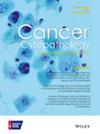A standardized reporting system for bone and soft tissue tumor cytopathology has not yet been established. The objective of this study was to explore the potential utility of a classification modified from the Milan System for Salivary Gland Cytopathology and compared it with the upcoming World Health Organization (WHO) system for fine-needle aspiration of soft tissue lesions.
The authors reviewed 285 cytology cases of bone/joint (n = 173) and soft tissue (n = 112) lesions, scoring each within diagnostic categories. The results were compared with histologic diagnoses and the risk of malignancy (ROM) for each category, and diagnostic reliability was analyzed.
All 285 cases were successfully classified into one of the following categories: nondiagnostic (6.3%), non-neoplastic (11.9%), atypia of uncertain significance (11.9%), benign neoplasm (5.6%), bone and soft tissue neoplasm of uncertain malignant potential (25.3%), suspicious for malignancy (1.4%), and malignant (37.5%). The ROM was 44.4% (eight of /18 cases) in nondiagnostic, 0% (zero of 34 cases) in non-neoplastic, 32.4% (11 of 34 cases) in atypia of uncertain significance, 0% (zero of 16 cases) in benign neoplasm, 16.7% (12 of 72 cases) in bone and soft tissue neoplasm of uncertain malignant potential, 75.0% (three of four cases) in suspicious for malignancy, and 100% (107 of 107 cases) in malignant categories. Using the WHO system, the proportion and ROM of the benign category (non-neoplastic and benign neoplasm) was 17.5% and 0%, respectively. Among benign and malignant lesions, the diagnostic accuracy, sensitivity, and specificity for detecting malignancy were 99.4%, 100%, and 98.0%, respectively.
The modified Milan system as well as the WHO system may be a useful cytopathologic classification tool for both bone and soft tissue lesions.



